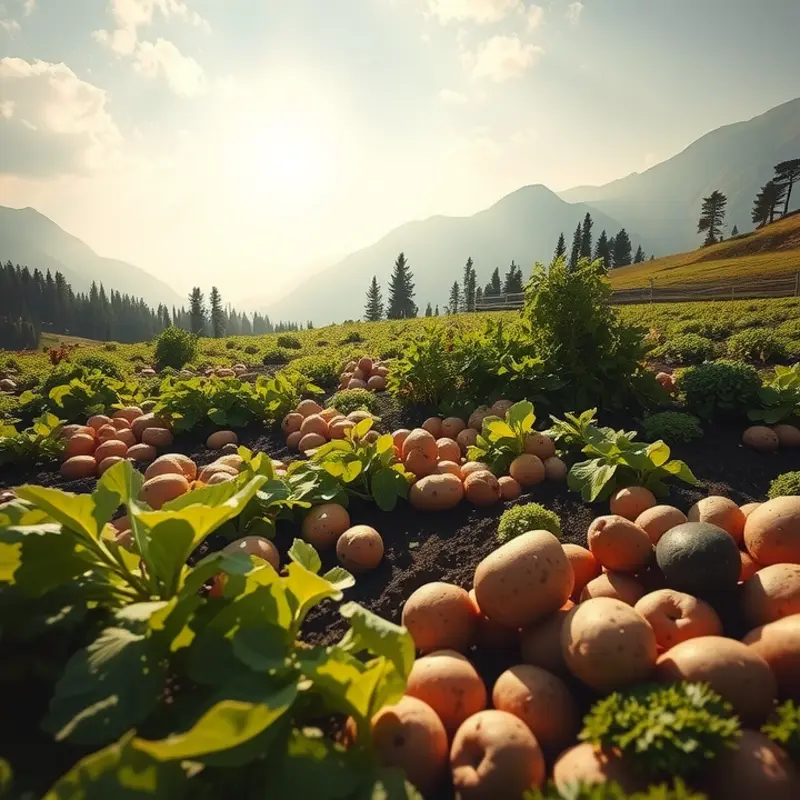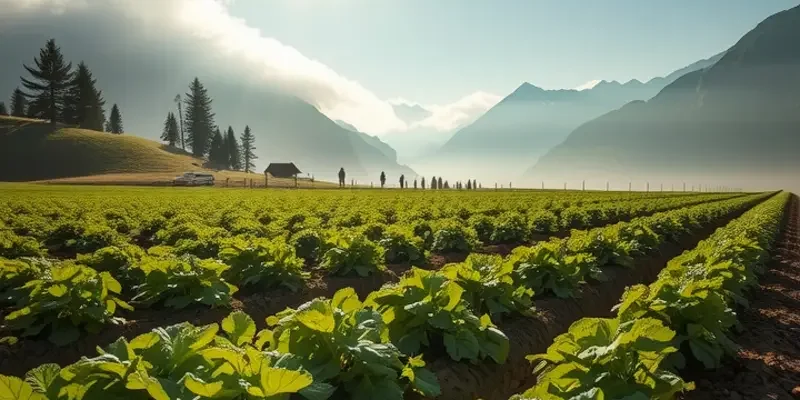Mountain ranges are not only breathtaking vistas but also homes to diverse culinary traditions. From the rich flavors of Alp-based fondue to the fiery spices of Andean stews, each region’s altitude shapes its food culture. These iconic meals tell stories of resilience, resourcefulness, and community. Prepare your tastebuds as we journey through high altitudes and explore the signature dishes that make mountain dining a remarkable affair.
Hearty Favorites from the Alps

Nestled between the verdant valleys and towering peaks, the Alps serve as the backdrop for a unique culinary repertoire. Alpine cuisine is a testament to resourcefulness, built around local ingredients designed to nourish and fortify against the harsh winter chill. At the heart of this tradition is the Swiss favorite, fondue, a warm, gooey indulgence that doubles as a communal ritual.
A typical Swiss fondue features a blend of cheeses such as Gruyère and Emmental, which melt into a luscious pool of flavor. This dish embodies more than just a meal; it symbolizes the Alpine gathering spirit, fostering conviviality as friends dip crusty bread into the pot. Accompanying the cheese are often garlic, white wine, and a splash of kirsch, each ingredient reflecting the local bounty. Enjoying fondue is a sensory journey through the heart of Swiss heritage.
Crossing borders into the Italian section of the Alps, one discovers polenta, a humble but beloved staple. Traditionally crafted from coarse ground cornmeal — a reflection of resourcefulness in using local grains — polenta is a versatile canvas for Alpine flavors. The creamy texture and subtle flavor make it an ideal companion for rich, slow-cooked stews or hearty sausages. Northern Italian households have woven polenta into their daily lives, turning a simple grain into a warm embrace against the cold.
Venturing to Austria, the charm continues with the whimsical dish of Kaiserschmarrn. Named after Emperor Franz Joseph I, Kaiserschmarrn is a fluffy, caramelized pancake shredded into irregular pieces and dusted with powdered sugar. This playful dish often includes raisins and is accompanied by fruit compote, like stewed plums or apples, tying together the sweetness and warmth of Alpine hospitality.
Each of these dishes underscores how Alpine cuisine utilizes local ingredients ingeniously to face climatic demands. They also illustrate the broader themes of mountain cooking: unity, warmth, and resilience. The hearty meals harken back to a simpler, agrarian way of life, driven by the necessity to create comfort from the surrounding seasonal produce.
As you explore the culinary landscape of the Alps, consider the delicate balancing act between tradition and innovation that defines these iconic dishes. Like many global culinary traditions, these meals reflect a deep connection to their origins, offering not only sustenance but a taste of culture and history. To learn more about the culinary influences resulting from trade across Europe, visit our related article on culinary influences.
Flavors of the Andes: A Cultural Feast

The Andes mountains stretch majestically across South America, cradling an array of unique culinary traditions. The region’s diverse ecosystems, from coastal plains to high-altitude plateaus, contribute to a vibrant palette of flavors rooted deeply in history. At the heart of Andean cuisine are indigenous ingredients like quinoa, corn, and potatoes, staples transformed into delightfully complex dishes over centuries.
Ceviche de Choclo offers a twist on the classic seafood dish familiar to many. Instead of fish, this variation uses choclo, a larger-grained Andean corn, as the star. The kernels are marinated with lime or lemon juice, cilantro, and sometimes a hint of chili pepper. This dish exemplifies the Andean region’s reliance on local produce and vibrant flavors, celebrating the natural sweetness and texture of choclo.
Lomo Saltado is a mouth-watering fusion of Peruvian and Chinese influences. Stir-fried strips of beef combine with onions, tomatoes, and soy sauce to create a savory concoction often served with rice and potatoes. This dish speaks volumes about the cultural exchange that has shaped Andean gastronomy. It embodies how migration and trade have expanded the palate of this region, an idea explored further in our culinary influences article.
The comforting Aji de Gallina is a rich, creamy chicken stew flavored with aji amarillo, a type of chili pepper native to Peru and Ecuador. The dish’s mild heat is complemented by the richness of walnuts and a base of evaporated milk, delivering a satisfying depth of flavor. Stories suggest that it originated during colonial times, blending Spanish culinary techniques with indigenous ingredients.
These dishes are not mere recipes but are vibrant narratives of resilience and identity. They reflect the resilience of the Andean people who have adapted their culinary practices to what their environment abundantly offers. The cultivation methods and recipes are passed down through generations, serving as cultural touchstones for Andean communities.
Understanding the food culture of the Andes also involves recognizing the region’s sustainable practices. Indigenous farming techniques, like terracing and crop rotation, sustain the biodiversity of native seeds. Such practices are not only key to preserving the region’s rich flavors but also contribute to global conversations on sustainable, eco-friendly eating.
From ceviche to hearty stews, Andean cuisine invites us to savor its rich history. The tradition of using native ingredients ensures not only a continuity of cultural heritage but also an exciting culinary future. This cultural feast encourages us to explore local and indigenous foods, deepening our appreciation for both the flavors and the stories they tell.
Final words
The mountains, with their majestic presence and varying climates, offer culinary treasures that resonate with the soul. From the warmth of Swiss fondue melting away the chill of winter nights to the spicy kick of Aji de Gallina bringing families together in the Andean highlands, each dish reflects its region’s unique story and culture. Embracing these iconic meals is not just about savoring flavors; it’s about connecting with diverse traditions and enjoying the fruits of nature, elevation, and heritage. As you embark on your next culinary adventure, consider exploring these mountainous delights, and let your taste buds savor the heights!








